In Brussels, Titus Kaphar recasts the figures in Renaissance Christian art
In a deconsecrated church in Brussels, American painter Titus Kaphar confronts representation in Renaissance iconography. Here, we offer a virtual walkthrough of the artist’s solo show, ‘The Evidence of Things Unseen’
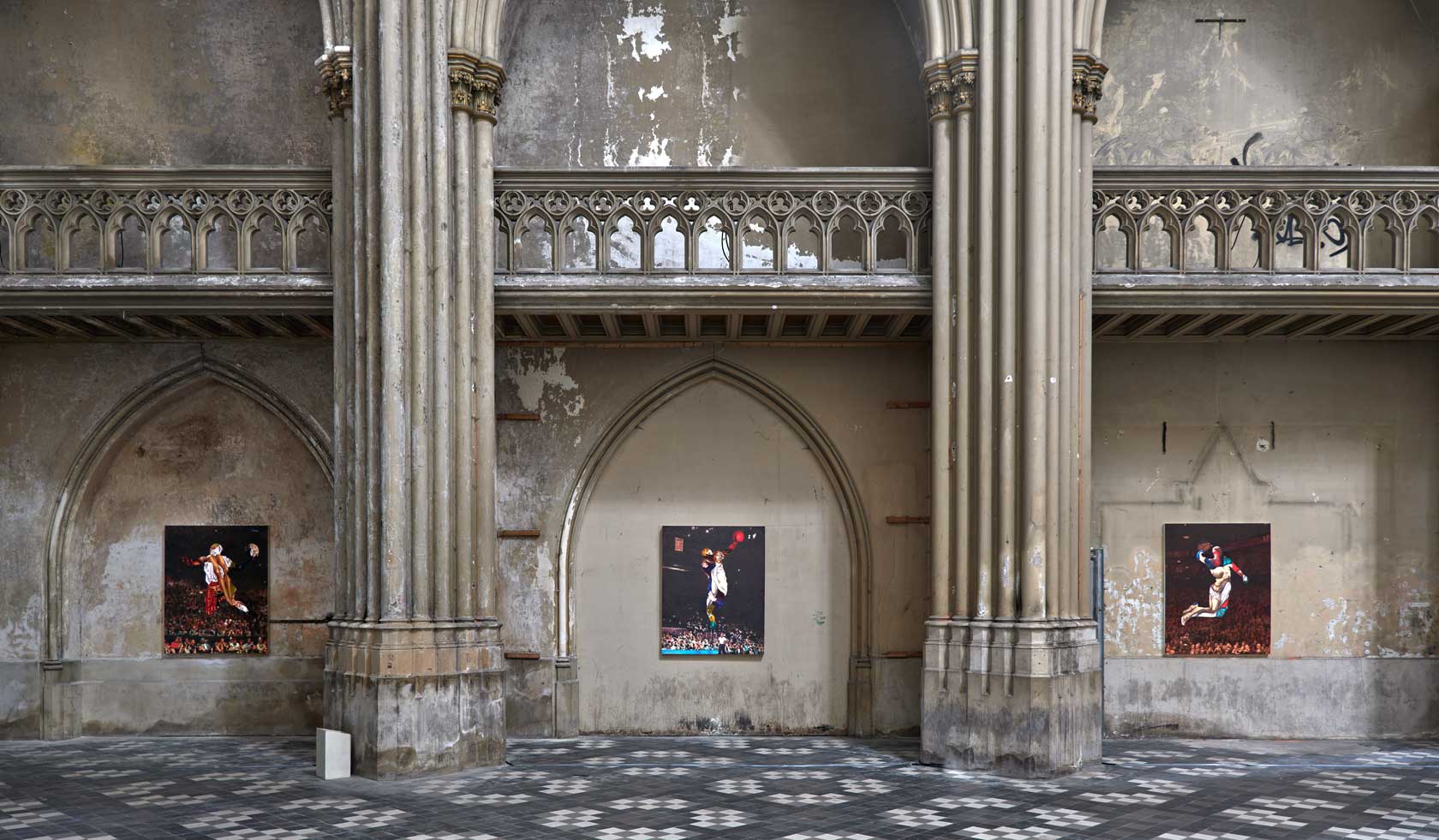
Titus Kaphar’s ability to prompt reflection on long-standing systemic oppressions, particularly through his dismantling and reconfiguration of classical structures in Western art, has never felt more poignant than in these times. His signature approach of deconstructing established iconography and imagery, and then rebuilding them with the inclusion of Black possibilities and representation has struck a resonant chord, especially in the way it encourages viewers to reassess the cultural canon and question how it came to be so.
Kaphar’s elegant and powerful dialogue takes on added significance in a new solo exhibition that’s currently being staged at L’Église du Gesú in Brussels, a deconsecrated church. Organised by the gallery Maruani Mercier and titled ‘The Evidence of Things Unseen’, the show presents new and recent works that address the issue of representation in Renaissance Christian imagery. Alongside this show, Kaphar is also presenting a series of new paintings in ‘From a Tropical Space’, a solo exhibition at Gagosian in New York.
In Brussels, set within the church’s crumbling, graffitied walls and neo-Gothic architecture, the array of works on view range from precise oil paintings to three-dimensional physical interventions that reinterpret historical artworks. An arresting rumpled canvas, titled Susan and the Elders sees Kaphar put his spin on the well-known narrative that originates from the Roman Catholic and Orthodox Church, just like masters such as Rembrandt, Tintoretto, Van Dyck and Rubens did before him. Dynamically crumpled, undulating and protruding from the wall, it fights its way into the viewer’s space to be fully reckoned with.
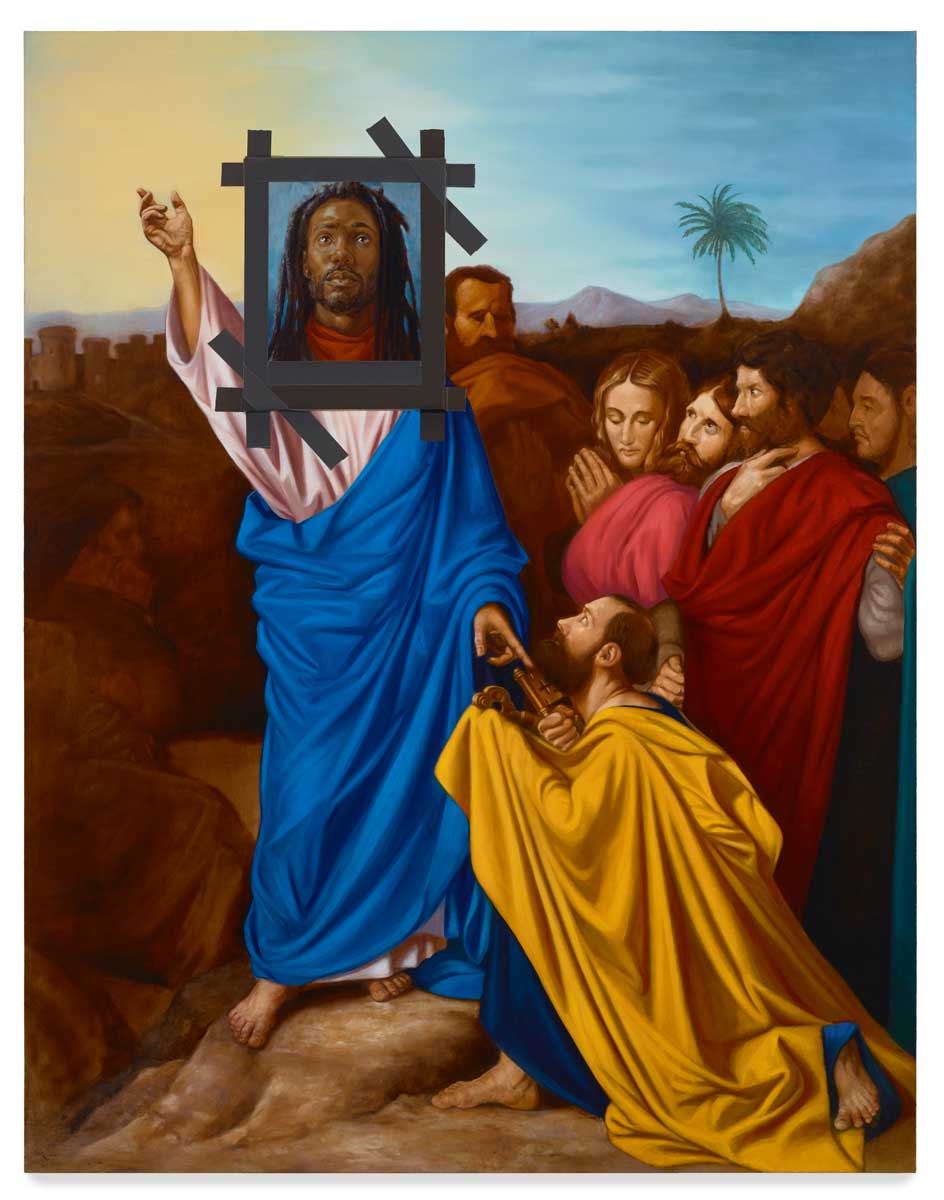
In another piece, Jesus Noir, the Michigan-born artist covers the face of Christ with a portrait of a young Black man using duct tape, thus imbuing the work with a sense of poignant urgency.
Beyond the venue’s religious significance, the presentation of the works in Belgium itself – the home of Northern Renaissance art – brings another layer of meaning to the exhibition. In Kaphar’s work, biblical figures are either glaringly erased using tar or adapted to reflect a contemporary context. Ascension III for example, sees the silhouettes of god-like sports figures created from a mélange of classical iconography.
‘If we don’t amend history by making new images and new representations, we are always going to be excluding ourselves,’ Kaphar states. There certainly is no going forward if we can’t look back.
Installation video of ’The Evidence of Things Unseen’, a solo exhibition of Titus Kaphar at L’Église du Gesú, Brussels, 2020 (c) Dave Bruel. Courtesy MARUANI MERCIER

Installation view of 'The Evidence of Things Unseen', a solo exhibition of Titus Kaphar at L’Église du Gesú, Brussels, presented by MARUANI MERCIER.
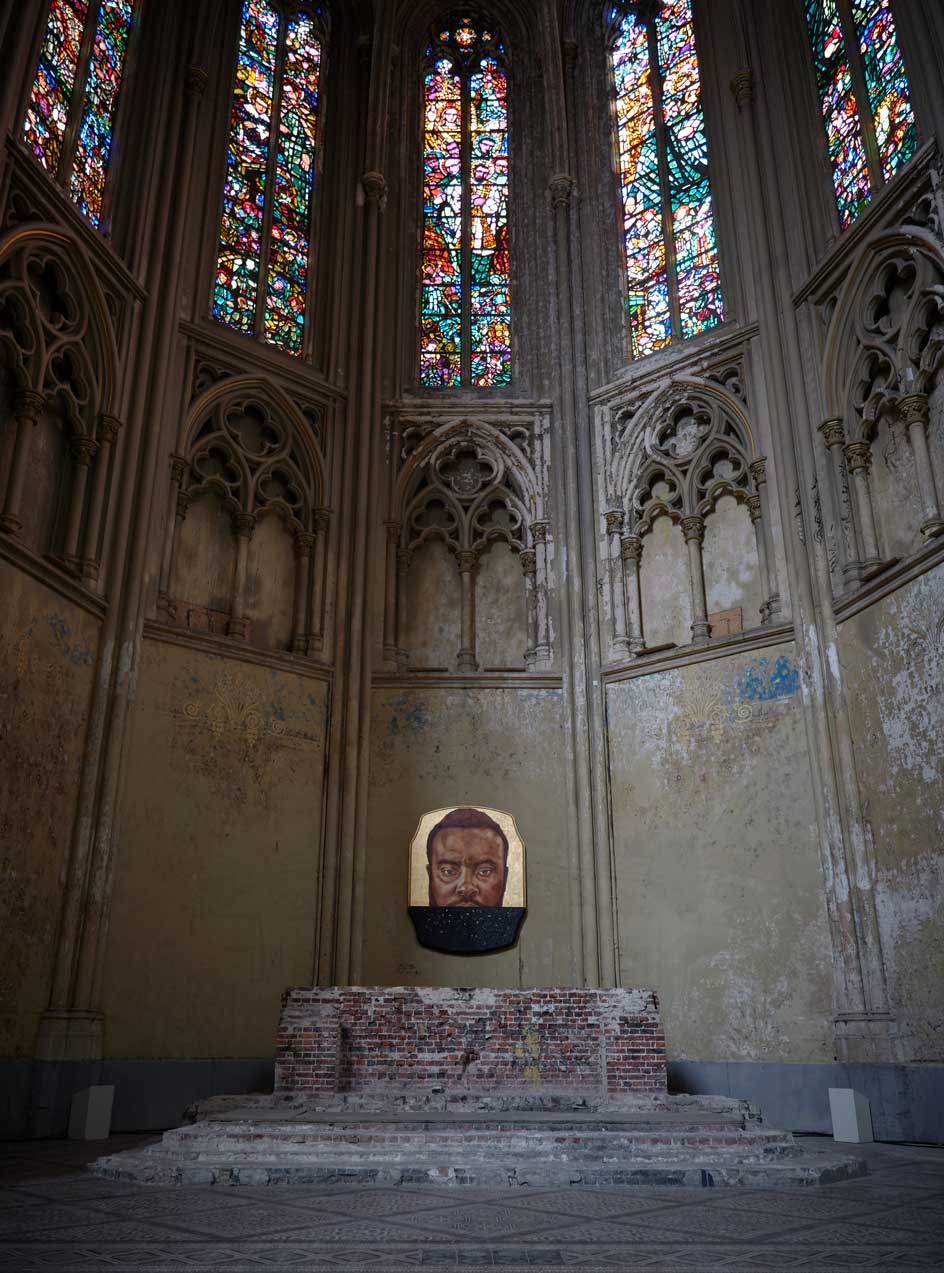
Installation view of 'The Evidence of Things Unseen', a solo exhibition of Titus Kaphar at L’Église du Gesú, Brussels, presented by MARUANI MERCIER.
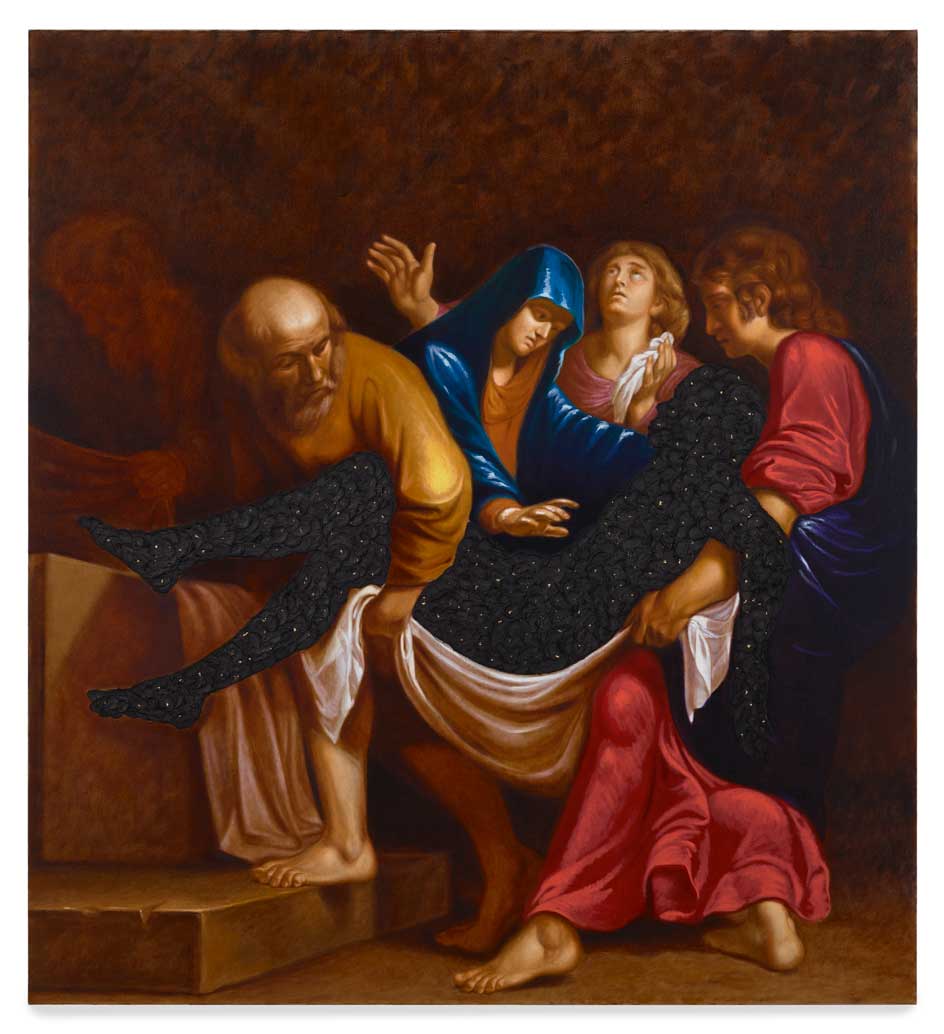
Titus Kaphar, Untitled, 2020, oil and tar on canvas.
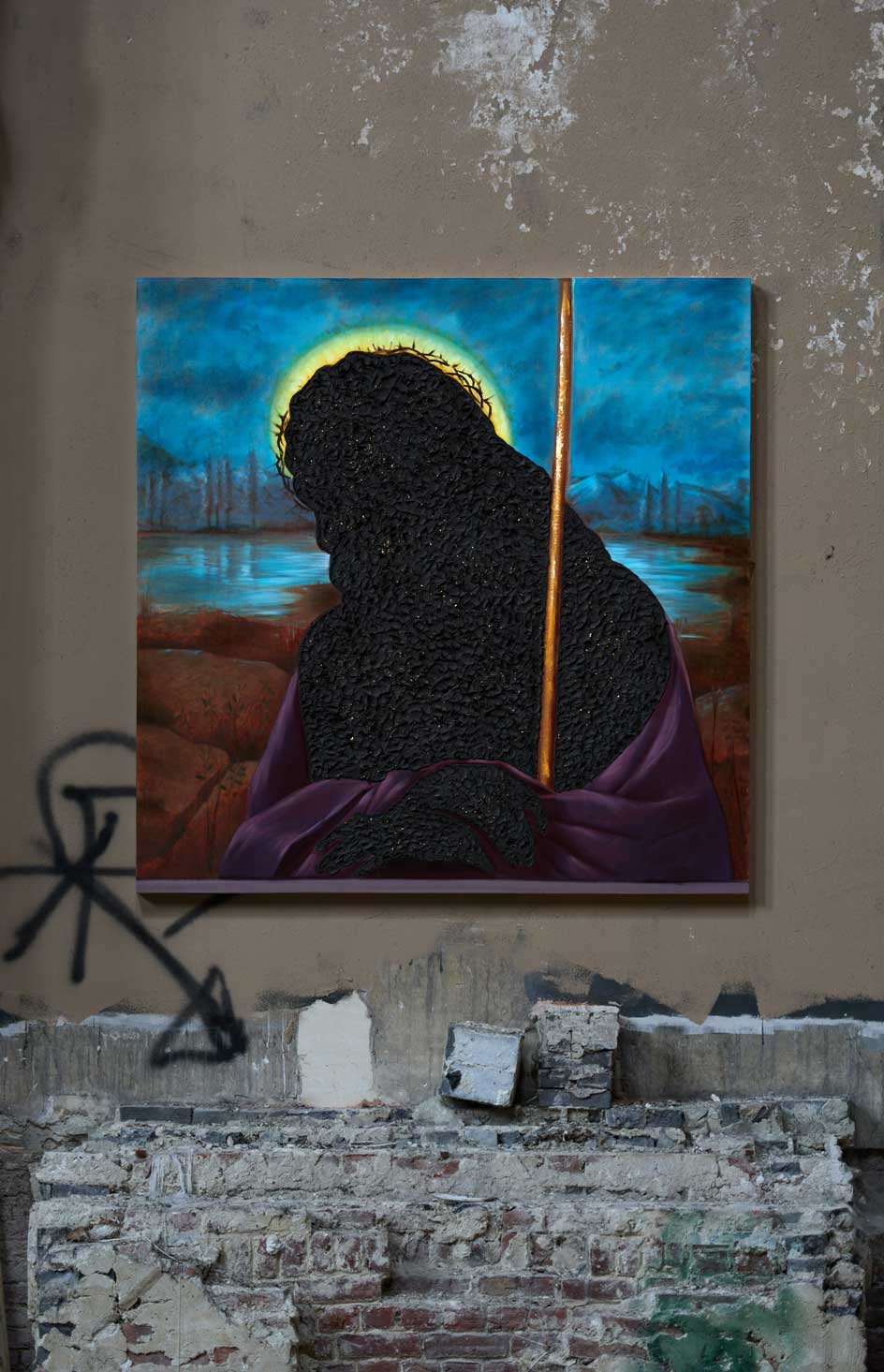
Installation video of 'The Evidence of Things Unseen’, a solo exhibition of Titus Kaphar at L’Église du Gesú, Brussels, 2020
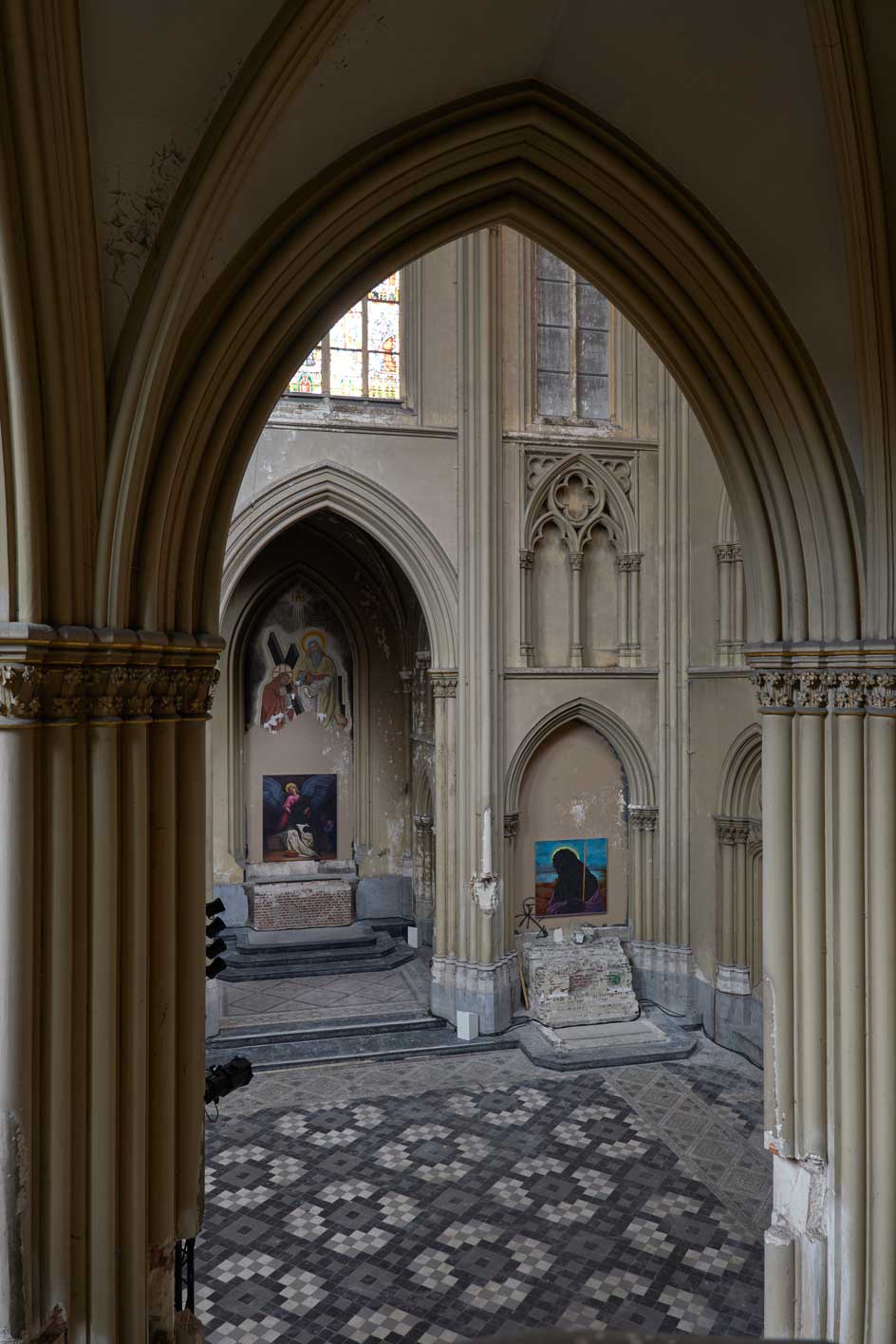
Installation video of 'The Evidence of Things Unseen’, a solo exhibition of Titus Kaphar at L’Église du Gesú, Brussels, 2020
INFORMATION
‘The Evidence of Things Unseen’ is available to view online at maruanimercier.com
Kaphar's concurrent exhibition, 'From a Tropical Space' is on view at Gagosian West 21st Street, New York until 19 December. gagosian.com
Wallpaper* Newsletter
Receive our daily digest of inspiration, escapism and design stories from around the world direct to your inbox.
Pei-Ru Keh is a former US Editor at Wallpaper*. Born and raised in Singapore, she has been a New Yorker since 2013. Pei-Ru held various titles at Wallpaper* between 2007 and 2023. She reports on design, tech, art, architecture, fashion, beauty and lifestyle happenings in the United States, both in print and digitally. Pei-Ru took a key role in championing diversity and representation within Wallpaper's content pillars, actively seeking out stories that reflect a wide range of perspectives. She lives in Brooklyn with her husband and two children, and is currently learning how to drive.
-
 Titanium watches are strong, light and enduring: here are some of the best
Titanium watches are strong, light and enduring: here are some of the bestBrands including Bremont, Christopher Ward and Grand Seiko are exploring the possibilities of titanium watches
By Chris Hall
-
 Warp Records announces its first event in over a decade at the Barbican
Warp Records announces its first event in over a decade at the Barbican‘A Warp Happening,' landing 14 June, is guaranteed to be an epic day out
By Tianna Williams
-
 Cure your ‘beauty burnout’ with Kindred Black’s artisanal glassware
Cure your ‘beauty burnout’ with Kindred Black’s artisanal glasswareDoes a cure for ‘beauty burnout’ lie in bespoke design? The founders of Kindred Black think so. Here, they talk Wallpaper* through the brand’s latest made-to-order venture
By India Birgitta Jarvis
-
 ‘Humour is foundational’: artist Ella Kruglyanskaya on painting as a ‘highly questionable’ pursuit
‘Humour is foundational’: artist Ella Kruglyanskaya on painting as a ‘highly questionable’ pursuitElla Kruglyanskaya’s exhibition, ‘Shadows’ at Thomas Dane Gallery, is the first in a series of three this year, with openings in Basel and New York to follow
By Hannah Silver
-
 Leonard Baby's paintings reflect on his fundamentalist upbringing, a decade after he left the church
Leonard Baby's paintings reflect on his fundamentalist upbringing, a decade after he left the churchThe American artist considers depression and the suppressed queerness of his childhood in a series of intensely personal paintings, on show at Half Gallery, New York
By Orla Brennan
-
 Desert X 2025 review: a new American dream grows in the Coachella Valley
Desert X 2025 review: a new American dream grows in the Coachella ValleyWill Jennings reports from the epic California art festival. Here are the highlights
By Will Jennings
-
 In ‘The Last Showgirl’, nostalgia is a drug like any other
In ‘The Last Showgirl’, nostalgia is a drug like any otherGia Coppola takes us to Las Vegas after the party has ended in new film starring Pamela Anderson, The Last Showgirl
By Billie Walker
-
 ‘American Photography’: centuries-spanning show reveals timely truths
‘American Photography’: centuries-spanning show reveals timely truthsAt the Rijksmuseum in Amsterdam, Europe’s first major survey of American photography reveals the contradictions and complexities that have long defined this world superpower
By Daisy Woodward
-
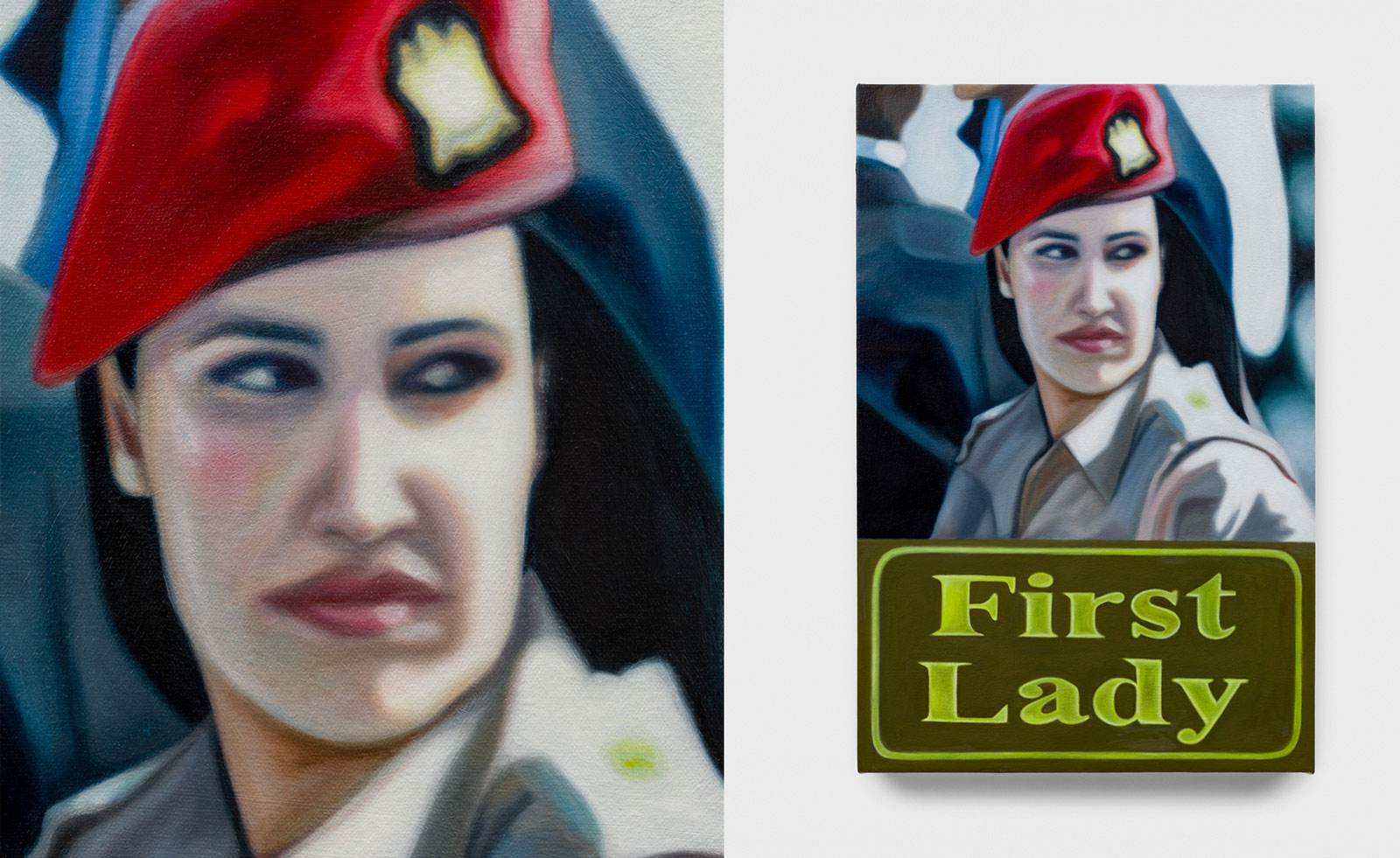 Tasneem Sarkez's heady mix of kitsch, Arabic and Americana hits London
Tasneem Sarkez's heady mix of kitsch, Arabic and Americana hits LondonArtist Tasneem Sarkez draws on an eclectic range of references for her debut solo show, 'White-Knuckle' at Rose Easton
By Zoe Whitfield
-
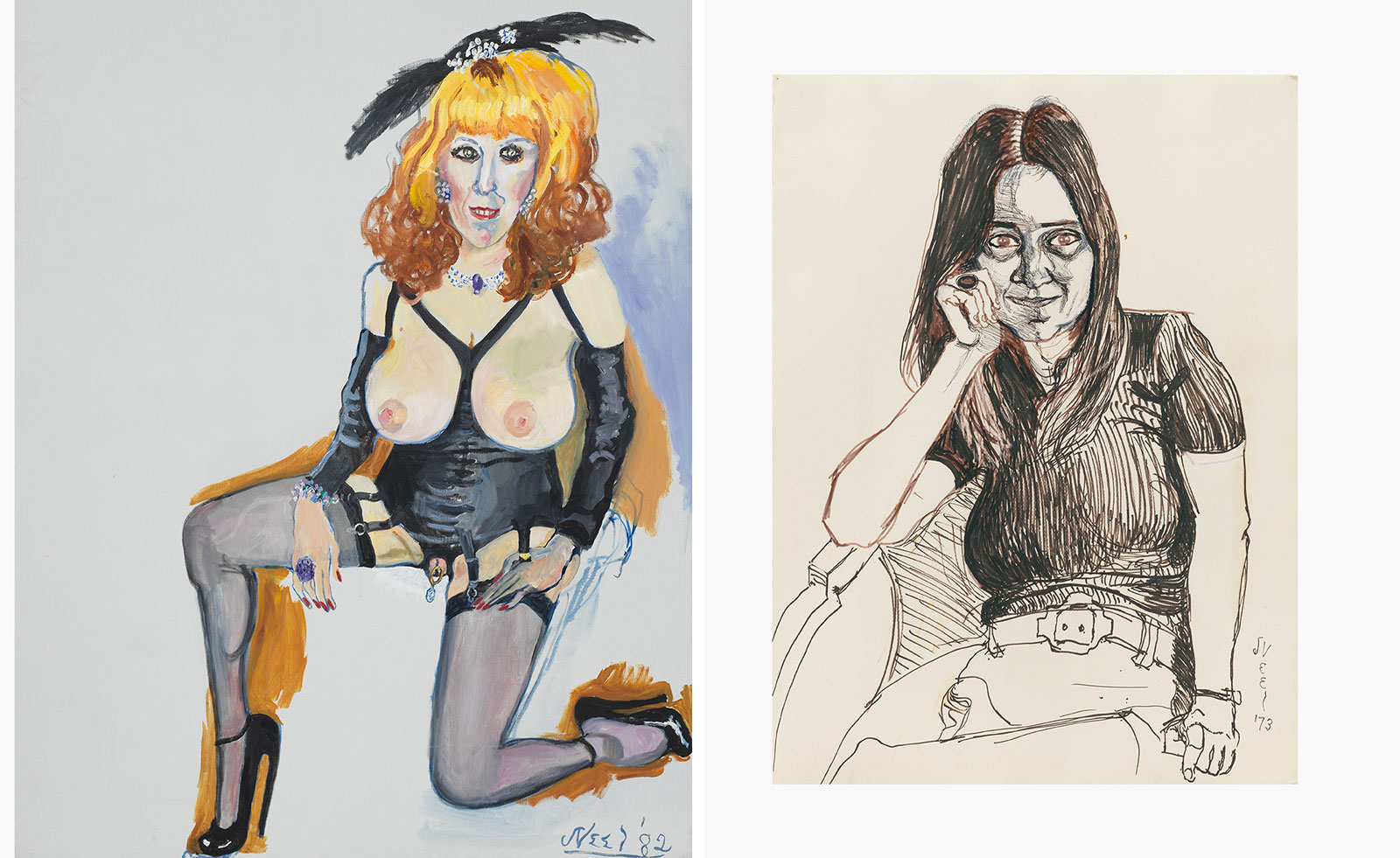 Alice Neel’s portraits celebrating the queer world are exhibited in London
Alice Neel’s portraits celebrating the queer world are exhibited in London‘At Home: Alice Neel in the Queer World’, curated by Hilton Als, opens at Victoria Miro, London
By Hannah Silver
-
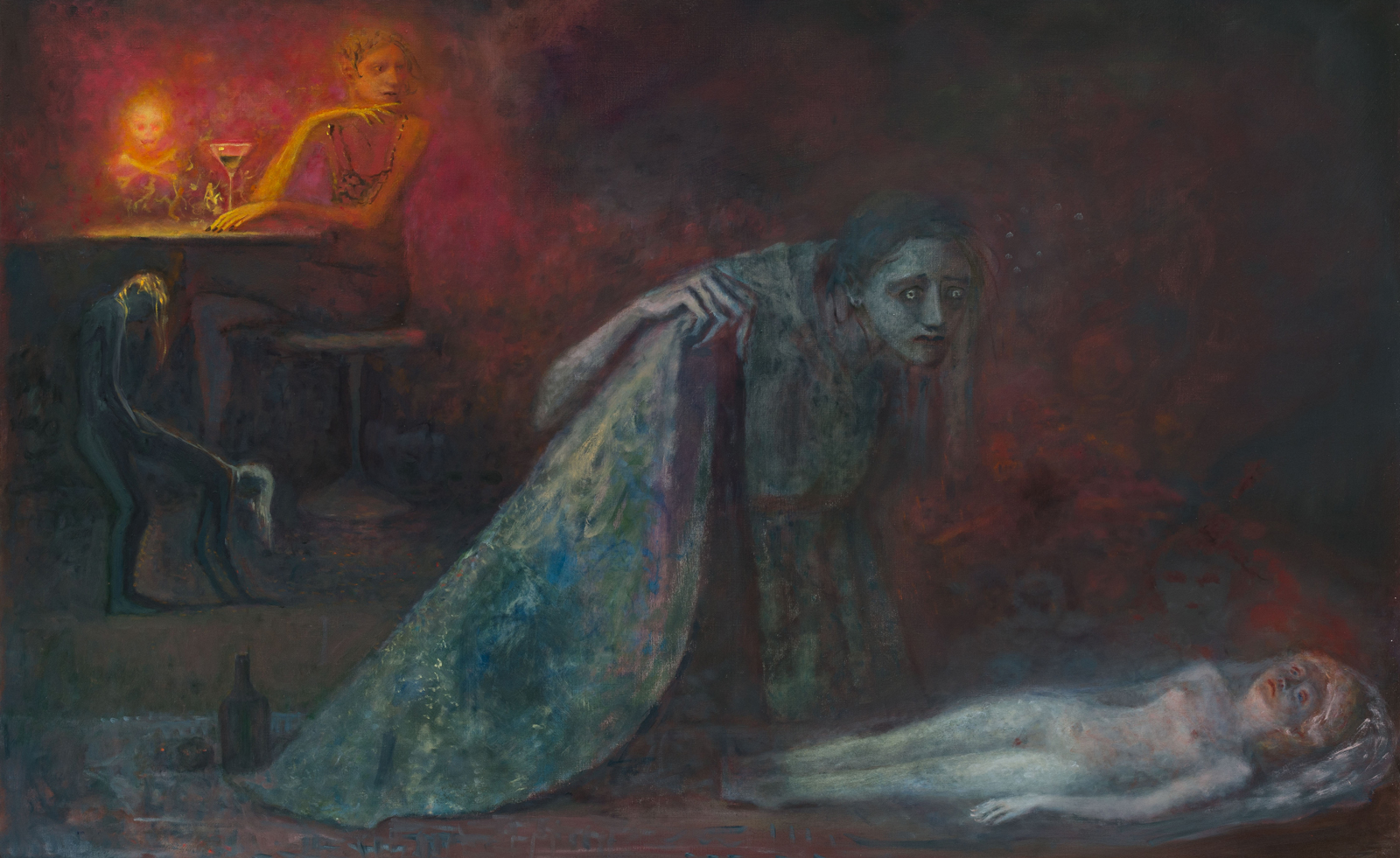 ‘You have to face death to feel alive’: Dark fairytales come to life in London exhibition
‘You have to face death to feel alive’: Dark fairytales come to life in London exhibitionDaniel Malarkey, the curator of ‘Last Night I Dreamt of Manderley’ at London’s Alison Jacques gallery, celebrates the fantastical
By Phin Jennings